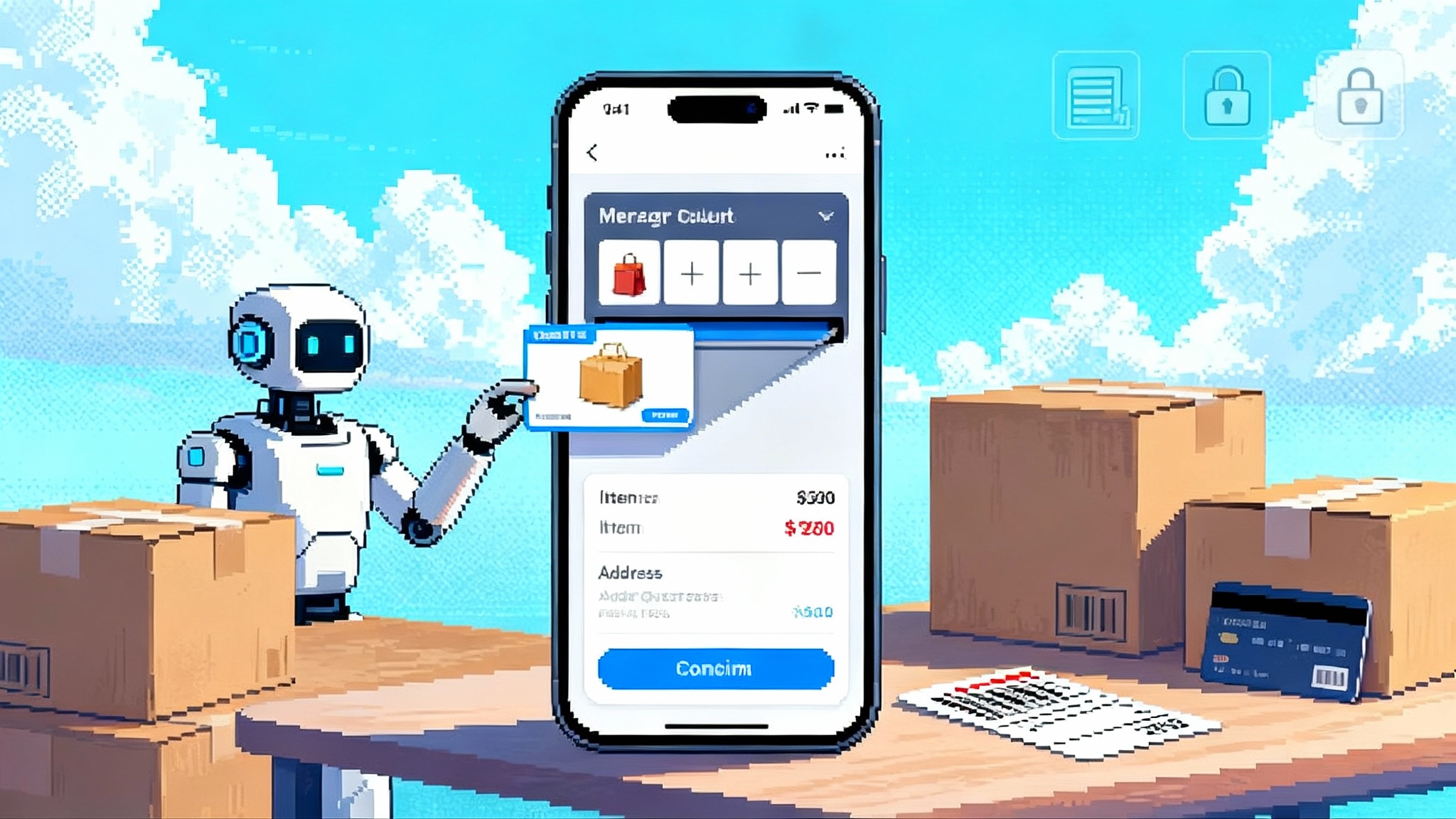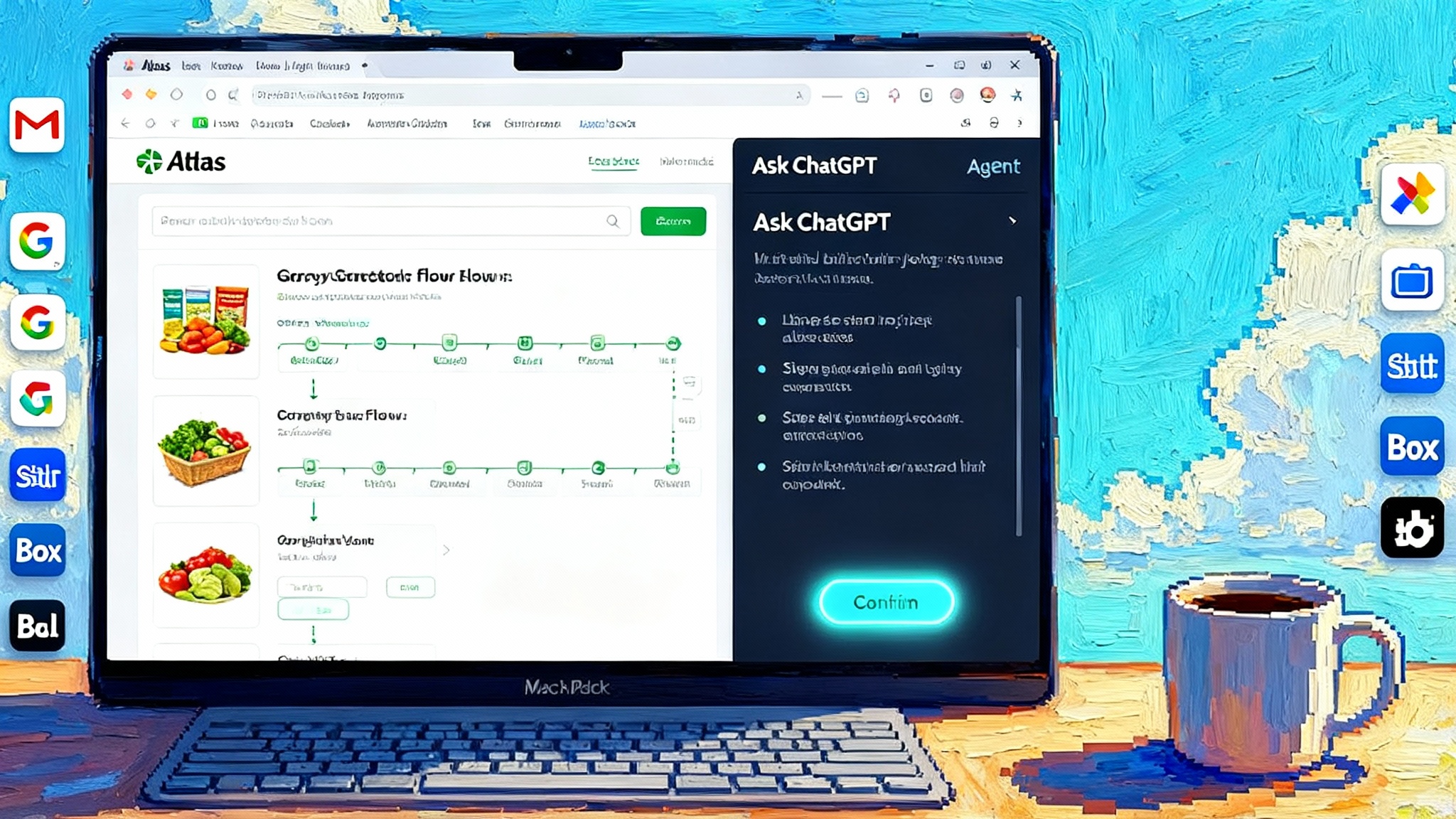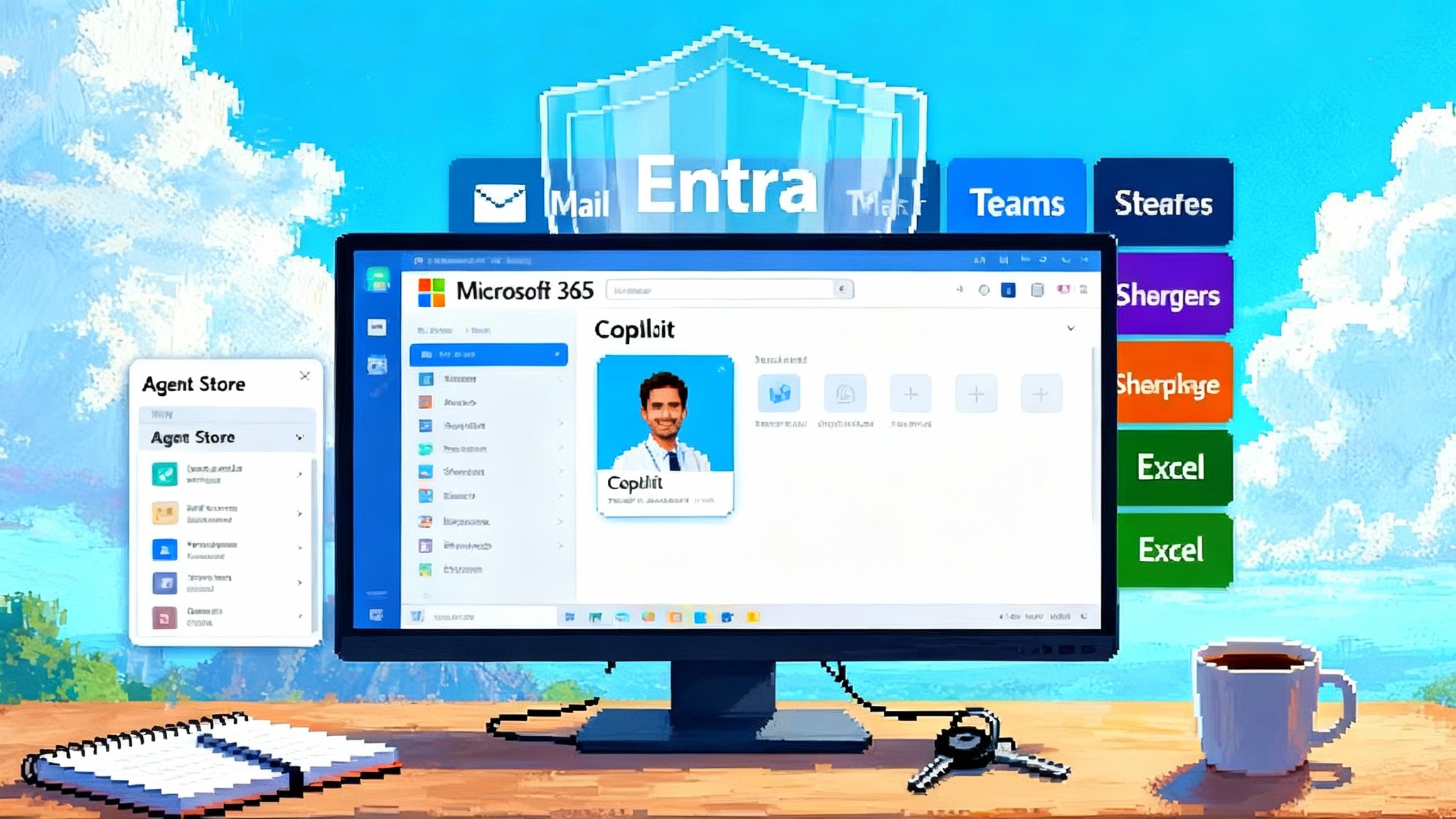SAP’s Joule Studio makes ERP an agentic control plane
At SAP TechEd in Berlin on November 5, SAP introduced Joule Studio and a wave of Joule Agents that shift ERP from a passive system to an agentic control plane. Here is what shipped, what is next by December 2025, and how to build governed agents.

Berlin’s reveal: ERP learns to act
On November 5 in Berlin, SAP outlined a decisive shift in how enterprise systems will run. The company introduced new agentic capabilities on SAP Business Technology Platform that make it practical to design, deploy, and govern teams of software agents across core processes. SAP set a target for general availability of custom agent building in December 2025 and said roughly forty first party Joule Agents would be available by year end. The centerpiece is Joule Studio, a builder that supports custom and system triggered agents, centralized monitoring, and built in interoperability through Agent to Agent collaboration and support for Model Context Protocol. You can review SAP’s own account in the SAP TechEd 2025 announcement recap.
At a practical level, the announcement matters because it moves agentic computing from the edges of enterprise resource planning into the center. Instead of using a chatbot to query a ledger, teams can now create governed agents that plan and act across the processes that define how a company runs.
From chatbot to control plane
For years, enterprise resource planning systems have been reliable record keepers with workflow engines. People supplied intent. Software moved data. With Joule Studio, SAP is reframing enterprise resource planning as an agentic control plane.
Think of a control plane as the tower, tarmac, and ground radar for operations. The tower holds the rules, the radios, and the overview. The planes are your agents. The tower does not only answer questions. It coordinates safe, governed action.
What changes in practice
- System triggered agents. Agents can wake on events, thresholds, or schedules, not just chat prompts. A margin alert in finance can trigger an agent to investigate variances across cost centers and propose journal adjustments with evidence.
- Centralized monitoring. Operations gets one console to observe agent health, approvals, drift, and cost. Teams can set rate limits, pause agents, roll back to prior versions, and audit who approved what and when.
- Agent to Agent collaboration. Specialized agents can hand off work with context. A supply agent passes a replenishment scenario to a logistics agent that books freight capacity and updates delivery dates.
- Model Context Protocol support. Model Context Protocol is an open standard for connecting agents to tools and data in a consistent way. That means less bespoke plumbing and more repeatable connectors to finance systems, data warehouses, emails, and calendars. See the Model Context Protocol documentation.
- Extensible first party agents. SAP is shipping Joule Agents for core products that customers can extend by adding private signals, custom tools, and approval steps, while preserving clean core principles.
The result is that agents can act across processes grounded in SAP semantics. In plain language, they understand the difference between a purchase requisition and a purchase order, a goods receipt and an invoice, a customer return and a credit memo. That grounding is the difference between a clever assistant and a reliable teammate.
Why the timing matters
The industry has spent the last two years proving that agents can solve isolated tasks. Friction has consistently appeared at the handoffs: permissions, data lineage, and the lack of a standard method for agents to cooperate. SAP’s move addresses those bottlenecks in three important ways.
- Governance first. Identity, roles, and separation of duties are native to enterprise resource planning. It becomes straightforward to apply familiar policy to new automation. If a human requires dual approval to release a payment batch, the agent inherits the same gate.
- Process orchestration is already modeled. End to end flows such as procure to pay, order to cash, plan to produce, and hire to retire are explicit in SAP’s data model. Agents can plan within the same lanes people use, rather than improvising routes.
- Interoperability built in. With Agent to Agent collaboration and Model Context Protocol support, agents can cooperate and reach beyond SAP without bespoke glue. That lowers the cost of connecting to ticketing, analytics, and partner systems.
Together, these factors move agentic work from proofs of concept into governed production systems where auditability is non negotiable.
How SAP’s approach compares
Every large platform is racing toward agents. The differences matter.
- Oracle Fusion focus. Oracle is embedding agents across Fusion Cloud Applications in finance, human resources, supply chain, and customer experience. The strength is prebuilt, in app assistants and a studio to configure them inside the Oracle footprint. This fits customers who want agents inside each application. SAP, by contrast, is elevating a control plane that spans processes across applications, with a clear stance on open interoperability and event driven design.
- ServiceNow orchestration. ServiceNow has leaned into coordination for agent teams across workflows. It looks and feels like a command center for specialized agents and sprawl management, especially for IT service management and customer support. SAP’s angle is to ground plans and actions in the enterprise resource planning object model, then expose those actions across modules as reusable, governed steps.
If you already run Oracle Fusion, Oracle’s native agents will feel immediate and integrated. If your nerve center is ServiceNow, its orchestrator organizes cross workflow teams of agents. SAP’s bet is that the deepest value appears when agents plan and act within the core enterprise resource planning semantics while still talking to the rest of the stack through open protocols. For additional context on the broader agent platform shift, see our takes on Google’s Agent Builder and Salesforce Agentforce 360.
What ships next
SAP set expectations for December 2025 general availability of custom agent building in Joule Studio, with about forty first party Joule Agents by year end. Expect the first wave to center on finance close acceleration, invoice matching and exceptions, materials planning suggestions, supplier onboarding, sales order hygiene, and people operations scenarios in SuccessFactors. The monitoring console and audit views are expected to harden for production, and Agent to Agent collaboration along with Model Context Protocol support will broaden connector coverage in early 2026.
Under the hood in plain English
- Agent to Agent, explained. Imagine a staffed call center where each inquiry lands with a triage specialist who routes it to billing, technical support, or renewals. Agent to Agent is that handoff pattern for software agents. It defines how agents advertise responsibilities and how they pass work with context so nothing is lost in translation.
- Model Context Protocol, explained. Model Context Protocol is like a standardized power outlet for tools. Instead of building a custom adapter for every device, you wire the room once and plug in what you need. The protocol defines how an agent asks for context or calls a tool, how the tool describes inputs and outputs, and how the conversation flows safely. Because it is open, the same connector can be reused across different agent hosts. For a deeper look at running MCP connectors at the edge, read our analysis of Cloudflare’s MCP at the edge.
- Grounding in enterprise resource planning models. SAP’s data and process model encodes business meaning. A general agent that sees a field named amount may not know whether it is a net amount, a tax amount, or an accrued amount. An agent grounded in enterprise resource planning understands the difference because object types and relationships are explicit.
A pragmatic build path to ship by Q4 and scale in 2026
Below is a step by step path that development leaders can follow to deliver a governed, interoperable agent in the next quarter, then scale it in waves through 2026.
1) Pick one valuable, auditable scenario
- Choose a process with measurable pain and clear ownership. Examples include three way match exceptions in procure to pay, backlog cleanup in order to cash, or late vendor onboarding in supplier management.
- Define the unit of value. For three way match, it could be the percent of invoices cleared without human touch and the cycle time from receipt to approval.
2) Confirm data and permissions upfront
- Map the tables, services, and events the agent will need in SAP S/4HANA, SAP Ariba, or SuccessFactors. Work with identity and access management to assign a service principal with least privilege and dual approval for sensitive actions.
- Align with compliance on audit requirements. Decide what metadata must be captured for every agent action: who triggered it, what it saw, what it proposed, and who approved it.
3) Stand up the platform foundations
- In SAP Business Technology Platform, enable Joule Studio, the monitoring console, and integration through SAP Integration Suite. Register development and staging tenants with separate credentials.
- Configure notifications and cost controls. Set soft and hard usage limits per agent and per team.
4) Design the agent in Joule Studio
- Start with a blueprint that states the goal, inputs, guardrails, tools, and target systems. For three way match, tools might include document ingestion, purchase order lookup, tolerance checks, and posting.
- Specify when it runs. Use system triggers on new invoice receipt, or a schedule every hour. Add a manual trigger for operators.
- Add approval steps at the right boundaries. For example, auto post up to a small threshold, then route to a human approver above that threshold.
5) Connect non SAP context with Model Context Protocol
- Use Model Context Protocol connectors for data that lives outside SAP. Examples include a data warehouse for supplier performance analytics or a productivity app for notifying buyers. Keep the connector thin and reusable. If needed, build a custom Model Context Protocol server once, then reuse it across agents.
6) Enable Agent to Agent handoffs deliberately
- Do not let every agent talk to every other agent. Create a registry that documents responsibilities and accepted messages. For procure to pay exceptions, a dispute resolution agent might call a vendor contact agent for missing documents and a payment agent for holds and releases.
7) Test for truth and safety
- Create a synthetic dataset with known outcomes and adversarial cases such as borderline tolerances, duplicate invoices, and conflicting dates. Run red teaming exercises that try to coax the agent into unauthorized actions.
- Add replay tests to catch regressions when you update a tool or model.
8) Ship to a pilot group with a canary plan
- Roll out to one business unit and target low risk suppliers. Keep humans in the loop for the first two weeks. Track approval latency and override rates.
- Define kill switches. Operations should be able to pause an agent immediately or roll back to a prior version without a deployment.
9) Observe relentlessly
- Instrument success metrics such as straight through processing rate, cycle time, effort saved per case, exception rates, and cost per action. Add experience metrics such as operator trust and clarity of explanations.
- Monitor drift. If the agent begins to rely on the wrong signals, catch it before it affects outcomes. Create dashboards that surface shifts in input distributions and output patterns.
10) Scale by cloning patterns, not code
- In 2026, plan expansions by pattern. The three way match agent framework can be adapted to credit memo matching in order to cash. A supplier onboarding agent can become a customer onboarding agent with the right changes to forms and approvals.
- Build a reusable catalog of policies and tools. For example, a generic approval tool with thresholds and dual control can serve every financial agent.
What good looks like by year end
By December 2025, a healthy first implementation will have the following traits:
- Production agents with runbooks. Every agent has an owner, a runbook for recovery, and a weekly operating review.
- Clear, explainable actions. Each action is logged with the data the agent saw, an outline of its reasoning, and links to the relevant transactions.
- Tight cost control. You know the marginal cost per action and can compare it to the manual baseline.
- Real handoffs, not spaghetti. Only a defined set of Agent to Agent handoffs is in place and each handoff is documented.
- Reuse across teams. At least one connector or policy has been reused by a second agent.
Risks to manage with concrete mitigations
- Agent sprawl. Too many agents doing overlapping tasks. Mitigation: maintain a registry, require architectural review for new agents, adopt a naming standard, and retire or merge duplicates.
- Silent failure. An agent stops running or degrades quietly. Mitigation: health checks reported to centralized monitoring, alerting on stale runs or abnormal throughput.
- Audit gaps. Actions without proper evidence. Mitigation: make logging part of the tool interface. A tool should not return success unless it writes an audit record with the transaction identifiers.
- Cross system ambiguity. Mismatched identifiers across systems. Mitigation: use enterprise resource planning canonical identifiers and add a reconciliation step before final writes.
A checklist for choosing your first use case
- Transaction volume is high enough to matter but not so critical that a rare error would be catastrophic.
- Data and permissions are already clean. If your source data is messy, fix that first.
- The process has clear service level agreements and owners who will adopt the agent’s recommendations.
- There is a meaningful but bounded scope where 30 to 60 percent straight through processing is achievable in quarter one.
What to watch in 2026
- Deeper Model Context Protocol integration that brings more of the enterprise data plane within reach, including additional connectors maintained by SAP and partners.
- Expansion of Agent to Agent patterns with reusable contracts that standardize handoffs between finance, supply chain, and human resources agents.
- Tighter ties between Joule Studio and observability stacks so that agents can publish metrics to enterprise dashboards alongside applications and integrations.
- A growing marketplace of Joule Agents that are extensible rather than fixed, which should speed time to value for common processes while preserving clean core.
The takeaway
Agents become truly useful when they stop living in proof of concept sandboxes and start working inside the systems that govern how a company runs. With Joule Studio and an expanding roster of Joule Agents, SAP is turning enterprise resource planning into an agentic control plane. The news is not another chatbot. It is the emergence of enterprise grade, cross process agents that inherit your policies, understand your data and processes, and cooperate through open protocols.
If you pick one valuable scenario, wire it with governance from day one, and treat interoperability as a first class requirement, you can ship a real agent by the end of this quarter and set a pattern that you can clone across 2026. That is how this shift moves from slides to systems that work.








